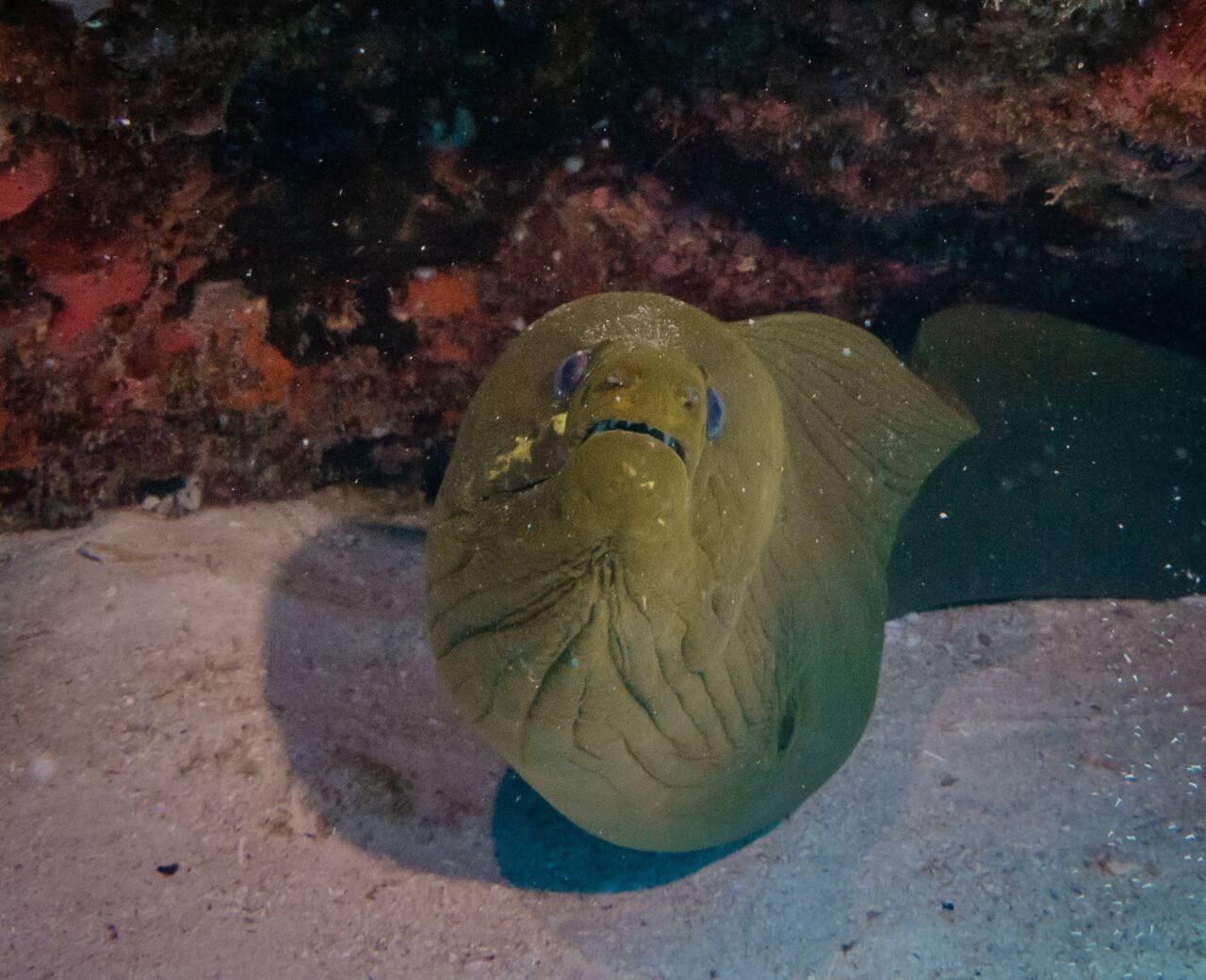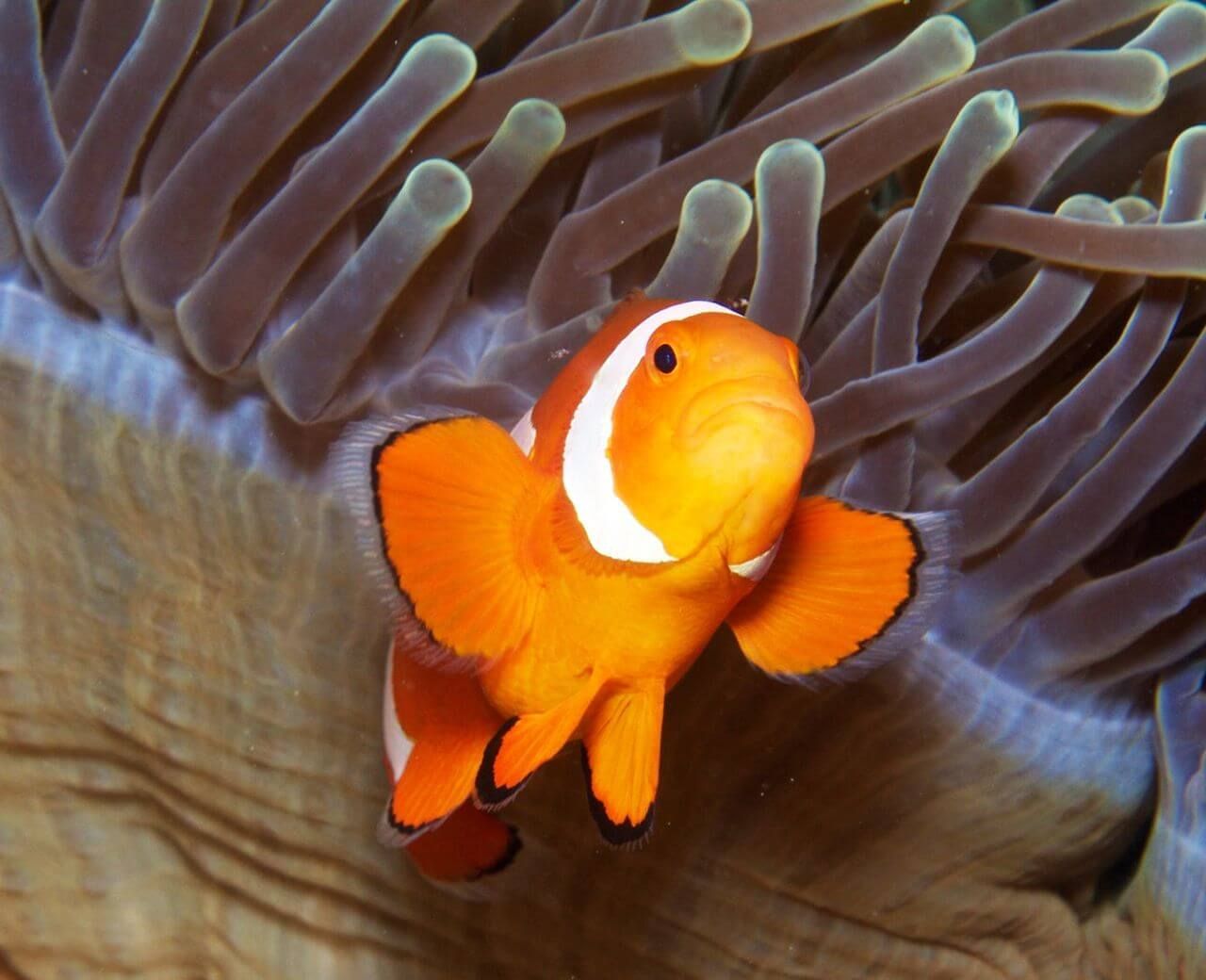As an incredibly diverse group of animals, I would think that everyone pictures something different when they picture a fish. Do you picture a colorful, tropical fish exploring a coral reef? Do you picture a largemouth bass in a midwestern lake or maybe a group of carp around a dock? Would it cross your mind to picture a huge whale shark or a majestic southern stingray? What about a long green moray eel? While a whale shark, the world’s largest fish, and a goldfish might not seem to share many characteristics, there is more than what meets the eye!
Fins
While they may look a little different depending on the type of fish, each species has fins instead of arms or legs. Many fish, like sharks and catfish, rely on these fins to make them agile and athletic swimmers to both catch prey and to avoid becoming prey. Other types of fish, like a seahorse or pufferfish, have fins but are not the most impressive swimmers. In fact, if these fish get caught up in a strong current, they can end up in the open ocean. Fish who lack the ability to escape a predator often have to rely on camouflage or toxic defense mechanisms to protect themselves!
Gills
Fish can use their fins to move around their underwater ecosystem and their gills to stay underwater for their whole lives! If you take a deep breath in, you’ll feel your chest and your ribs expand as your lungs fill up with air. This makes us very different from fish who actually don’t have any lungs at all! Instead, they suck in oxygen-rich water through their mouth which then passes over their gills. The gills are covered in tiny blood vessels which do a great job at stealing some of the oxygen from the water and sending it throughout the fish’s body. Who knew fish could “breathe” without any lungs!
Cold-Blooded
Like our reptile, amphibian, and invertebrate friends, fish are cold-blooded, or ectotherms. Their body temperature is highly dependent on the temperature of the water around them. So, how does a fish who dives hundreds of feet deep withstand the frigid temperatures while other fish are restricted to warm, tropical waters? It all comes down to adaptations that have occurred on a molecular level. Some species are more temperature dependent than others, which restricts them to a very narrow range of temperatures for their organs and metabolisms to function properly. Other fish, like the whale shark which can dive thousands of feet to chilly temperatures, are slower to change their overall body temperature when the temperature of their environment changes. While they can spend some time in the extreme temperatures, they must come back to their optimal range to allow proper body function.
Vertebrates
Along with being ectothermic, all fish are vertebrates, or have a bony body structure! Now, some of you may be thinking, what about jellyfish or starfish? Well, I hate to be the one to tell you this, they are actually not true fish! In fact, starfish were recently renamed “sea stars” because they, and jellyfish, are invertebrates. All true fish have a backbone, though in sharks and stingrays, it is not a true bone. Instead they have a “skeleton” made of cartilage like in your nose or ears! Whether it is true bone or cartilage, a true fish must have a hard skeletal structure.
As a true fish lover, I wish I could grow gills and spend hours observing fish in their natural environment. It can be challenging for scientists to learn about fish because, well, we are limited by human characteristics. Accredited aquariums are an amazing resource for scientists to study fish and their behaviors, and they allow normal people like us to see the wonders of the deep ocean. Next time you’re feeling fishy, make sure to find an AZA accredited aquarium to help support fish conservation and to learn the latest about our aquatic neighbors.











